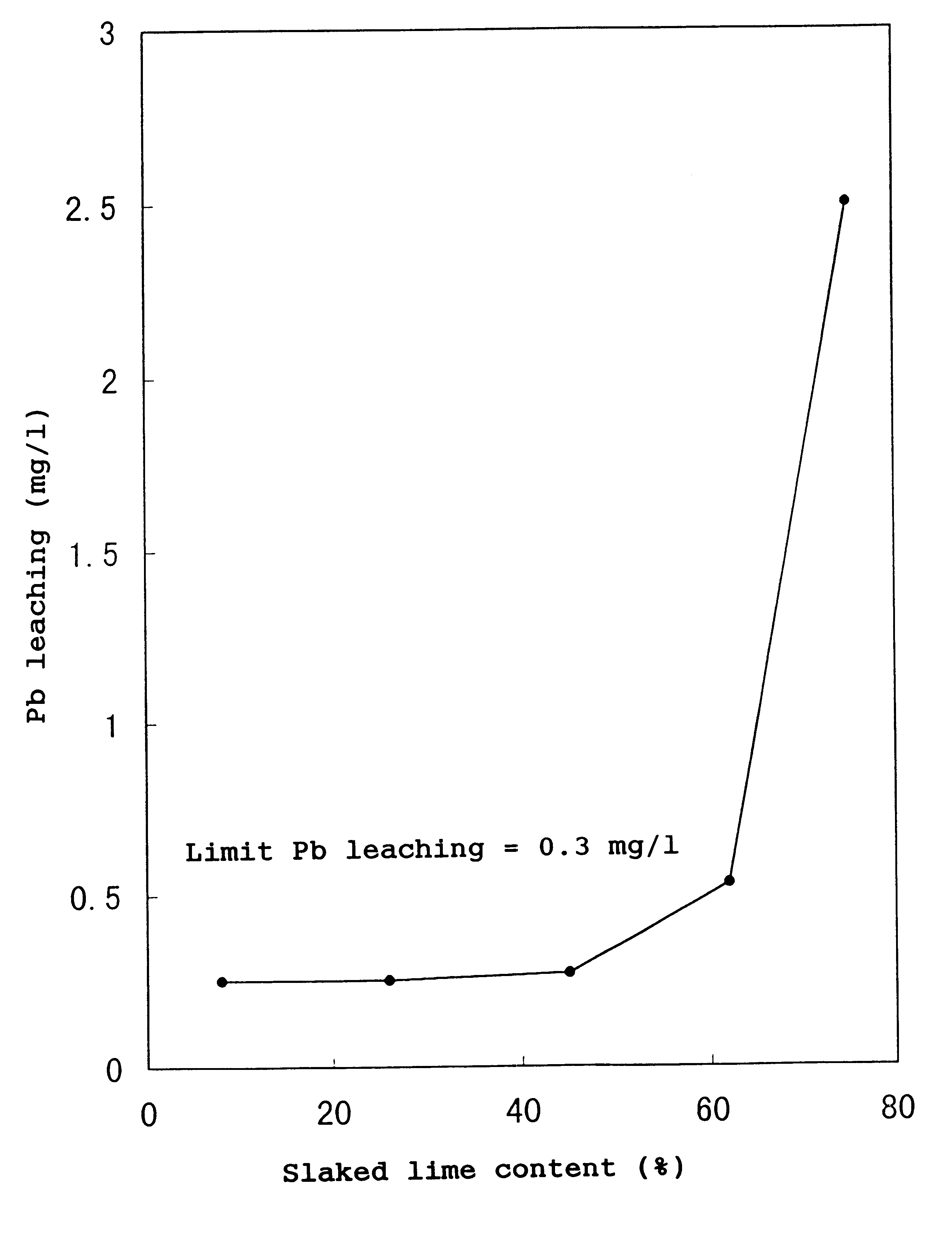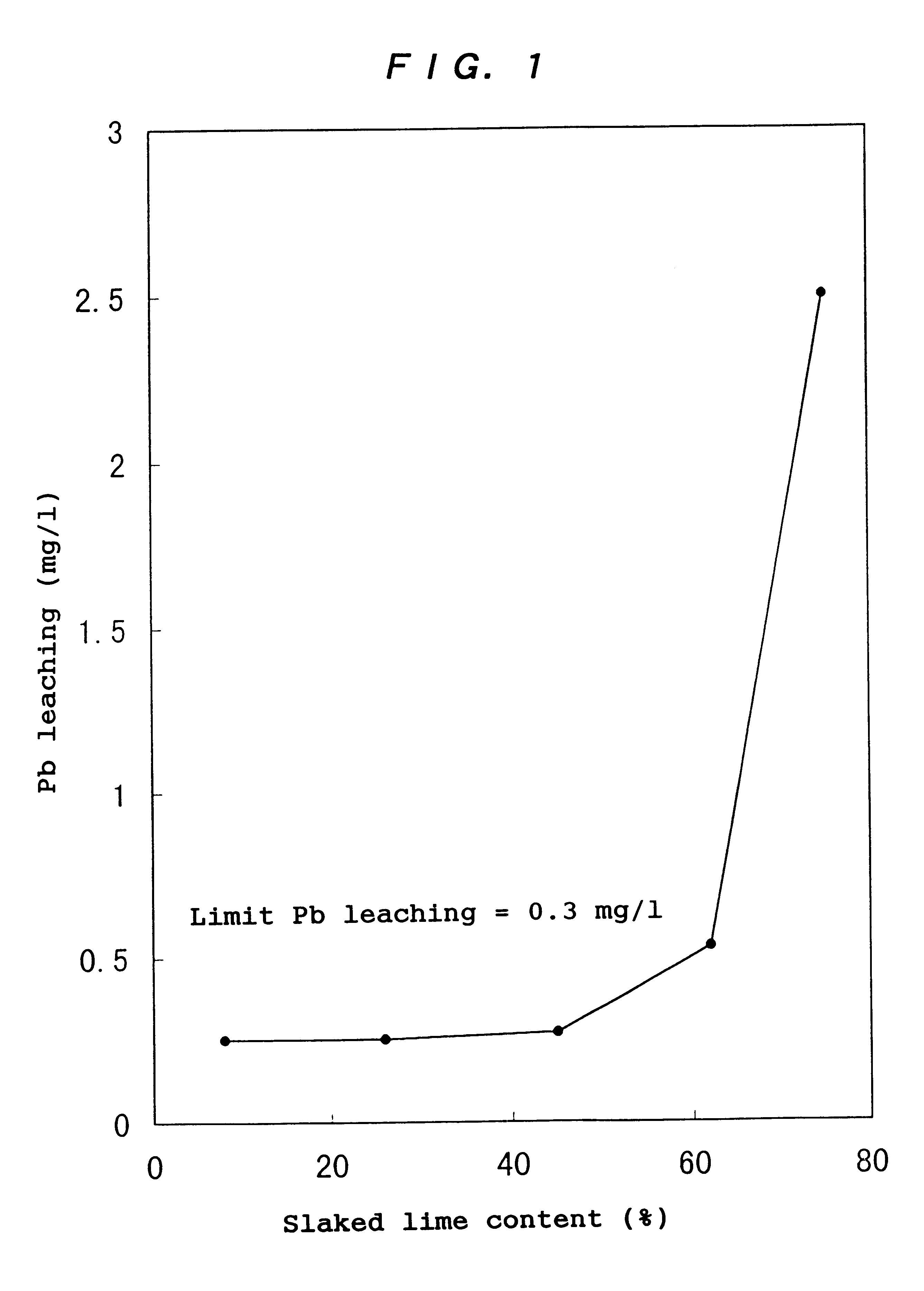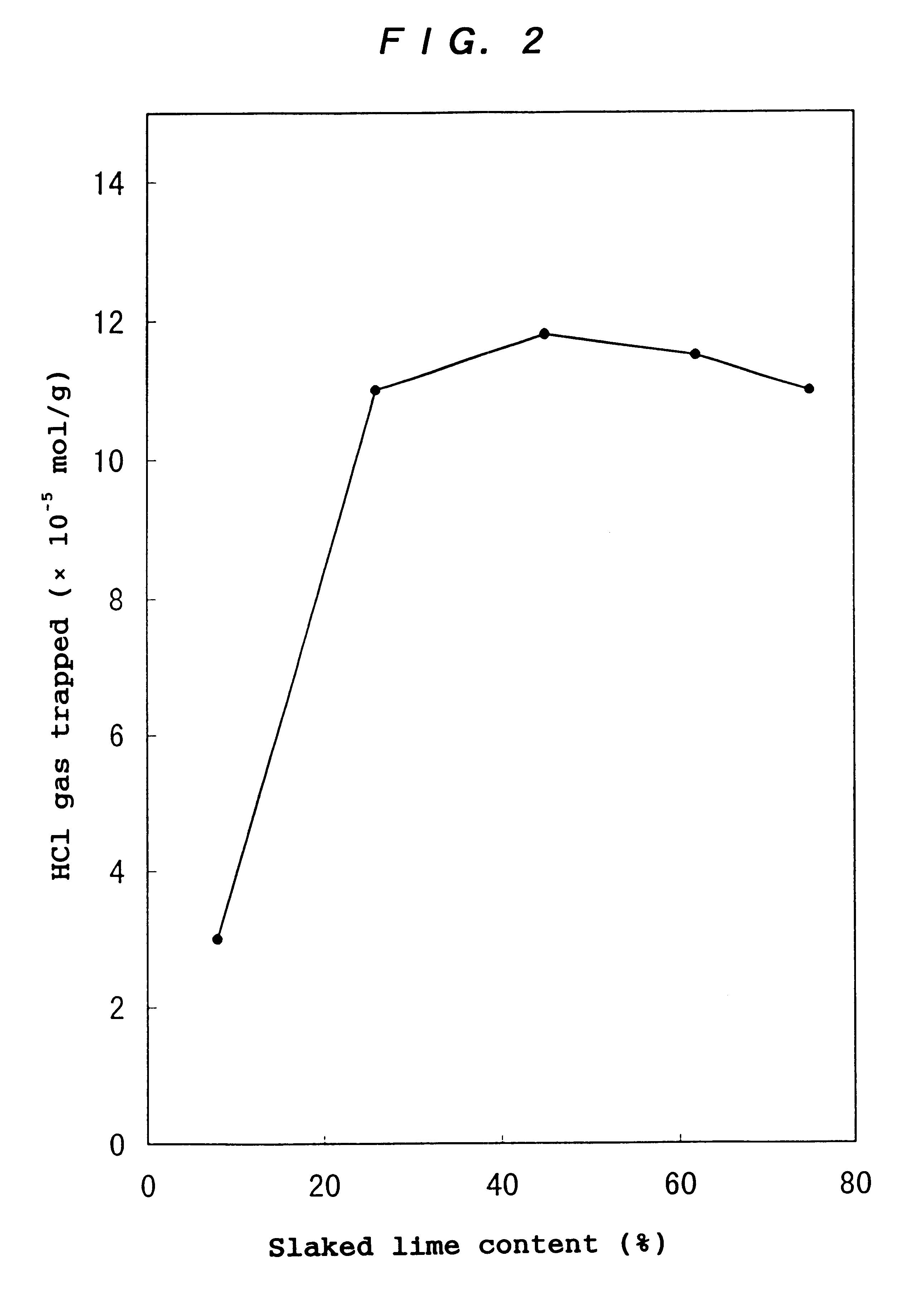Exhaust gas treating agent, process for producing the same, and method of treating exhaust gas
- Summary
- Abstract
- Description
- Claims
- Application Information
AI Technical Summary
Benefits of technology
Problems solved by technology
Method used
Image
Examples
example 1
Normal portland cement and warm water (70.degree. C.) were charged, in a solid / liquid ratio of 1:6, into a grinder (vibrating mill; hereinafter "grinder" means "vibrating mill") and the hydration reactions were allowed to proceed for 2 hours with grinding and the slurry obtained was dried at 150.degree. C. for 24 hours and broken up into finer particles to give an exhaust gas treatment agent-1 of the present invention.
The mean particle diameter, specific surface area and calcium hydroxide content of each of the gas treatment agent obtained in Example 1 and the gas treatment agents obtained in the succeeding examples and comparative examples are shown in Table 1.
example 2
A 7:3 (by weight) mixture of normal portland cement and calcium oxide, and warm water (70.degree. C.) were charged, in a solid / liquid ratio of 1:6, into a grinder and hydration was effected for 2 hours with grinding and the slurry obtained was dried at 150.degree. C. for 24 hours and then broken up into finer particles to give an exhaust gas treatment agent-2 of the present invention.
PUM
| Property | Measurement | Unit |
|---|---|---|
| Length | aaaaa | aaaaa |
| Percent by mass | aaaaa | aaaaa |
| Percent by mass | aaaaa | aaaaa |
Abstract
Description
Claims
Application Information
 Login to View More
Login to View More - R&D
- Intellectual Property
- Life Sciences
- Materials
- Tech Scout
- Unparalleled Data Quality
- Higher Quality Content
- 60% Fewer Hallucinations
Browse by: Latest US Patents, China's latest patents, Technical Efficacy Thesaurus, Application Domain, Technology Topic, Popular Technical Reports.
© 2025 PatSnap. All rights reserved.Legal|Privacy policy|Modern Slavery Act Transparency Statement|Sitemap|About US| Contact US: help@patsnap.com



